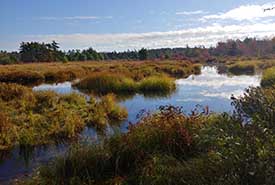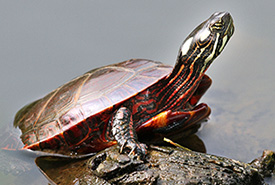Southwestern Nova Scotia

Upper Ohio, NS (Photo by NCC)
Southwestern Nova Scotia is recognized as a UNESCO-designated Biosphere Reserve.
There is currently an opportunity to protect important and unique habitat for future generations of Nova Scotians in the Port Joli and Port L’Hebert Coastal Area.
Rare and at-risk species are found in this area, such as Blanding's turtle, eastern ribbonsnake, Canada warbler, olive-sided flycatcher and several plants grouped in the Atlantic Coastal Plain Flora.
One of Canada’s most diverse forest types is the Wabanaki (Acadian) forest. An old-growth forest of this type is rare in Nova Scotia but offers significant habitat for wildlife. Forests store and purify rainwater, prevent erosion and provide a buffer to inland areas during storms. This habitat also supports endangered species, such as black bear, barn swallow and Nova Scotia mainland moose.
The wetlands and lakefront shorelines also provide important habitat for rare and at-risk species. The freshwater shorelines of lakes and rivers are home to the Atlantic Coastal Plain Flora; a group of 90 different species of wetland plants, some of which occur nowhere else in Canada. Eleven of these plants are at risk, including rose coreopsis and plymouth gentian. Without conservation and recovery efforts, they are at risk of extinction.

Eastern painted turtle (Photo by Greg Schechter)
The Port Joli and Port L’Hebert peninsulas are recognized for having areas with a significant density of uncommon and rare cyanolichen species, including the globally rare, nationally and provincially listed endangered boreal felt lichen and vole ears lichen, the provincially vulnerable blue felt lichen and the provincially threatened black-foam lichen, which is also a Committee on the Status of Endangered Wildlife in Canada species of special concern. With multiple occurrences of these species in the area, this site is likely among one of the most significant sites for these rare and endangered lichens in Nova Scotia.




